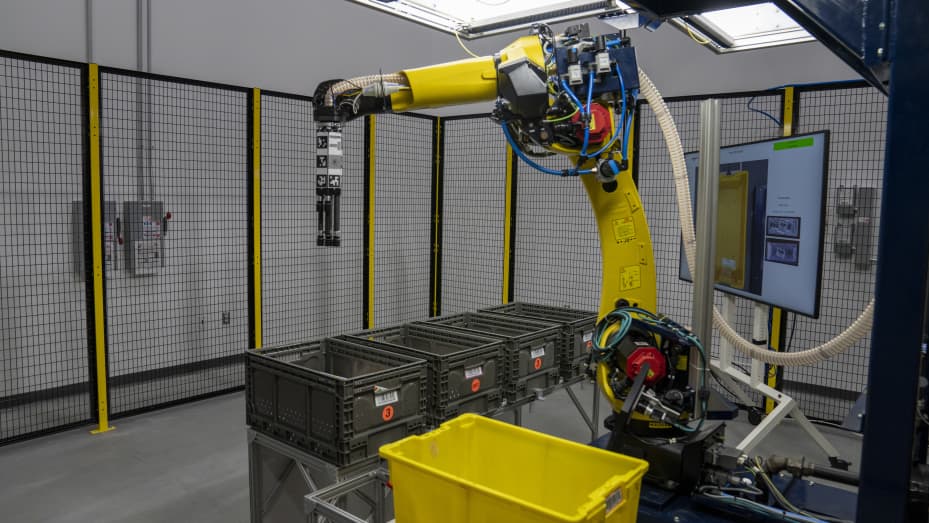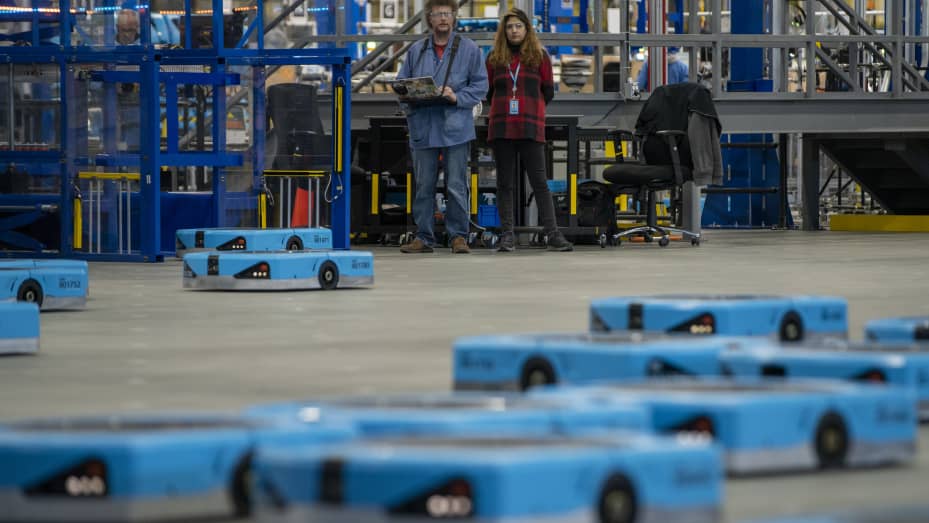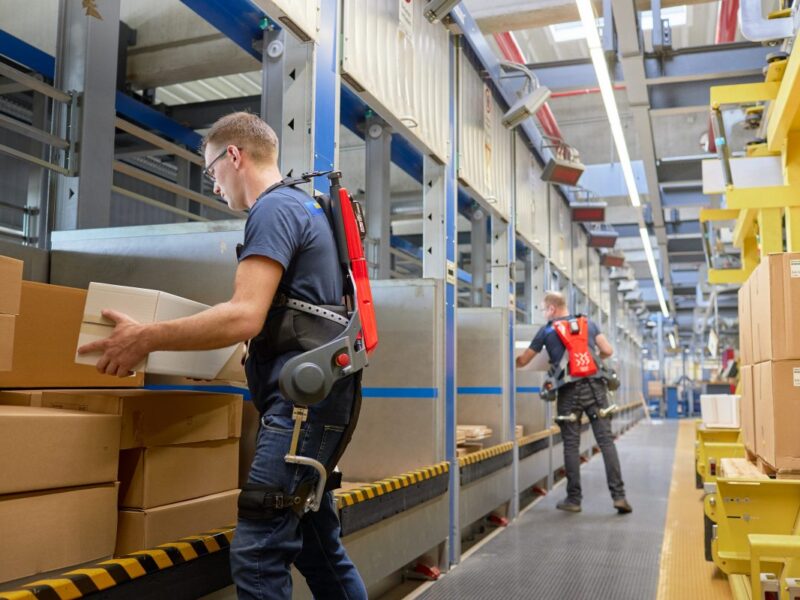
About 75% of all parcels handled by Amazon annually are handled by robots in at least one part of the delivery process. In June, Amazon introduced its first fully autonomous robot that can work alongside warehouse workers, in addition to other systems that can sort and move parcels.
“Sparrow” technology
Amazon introduced a new warehouse technology called “Sparrow” at its Robotics and Delivery Conference. This robotic arm, which can lift and sort objects of different shapes and sizes, can help warehouse workers with some of the most tedious aspects of the job.
Sparrow uses computer vision and artificial intelligence to move goods before they are packaged.
- The robotic arm is so sensitive that it picks up a board game, a bottle of vitamins and a set of sheets – all the kinds of items that might pass through one of the company’s warehouses – and deftly places them into crates.
- The robotic arm can identify about 65% of Amazon’s inventory. Suction cups attached to the robot’s surface allow it to grip items firmly.
- Previous iterations of robotic arms were capable of lifting boxes, which are usually uniform in shape but could vary in size. But Sparrow is able to handle objects with different curvature and size.

Advantages of using “Sparrow”
The introduction of robots in the warehouse often raises the question of whether human jobs will be replaced and “Sparrow takes over repetitive tasks”, freeing up employees to focus on other things. This technology can increase safety in the workplace. The use of robotic arms in warehouses has shown that injuries are lower than in facilities without automation.
By adding more automation to its order fulfillment centers, Amazon is reducing its dependence on ordinary workers to pick, pack and ship goods in its warehouses. Amazon has been steadily adding to its fleet of warehouse robots since it acquired Kiva Systems for $775 million a decade ago. Kiva evolved into Amazon Robotics, the company’s own incubator for robotic order fulfillment systems.
